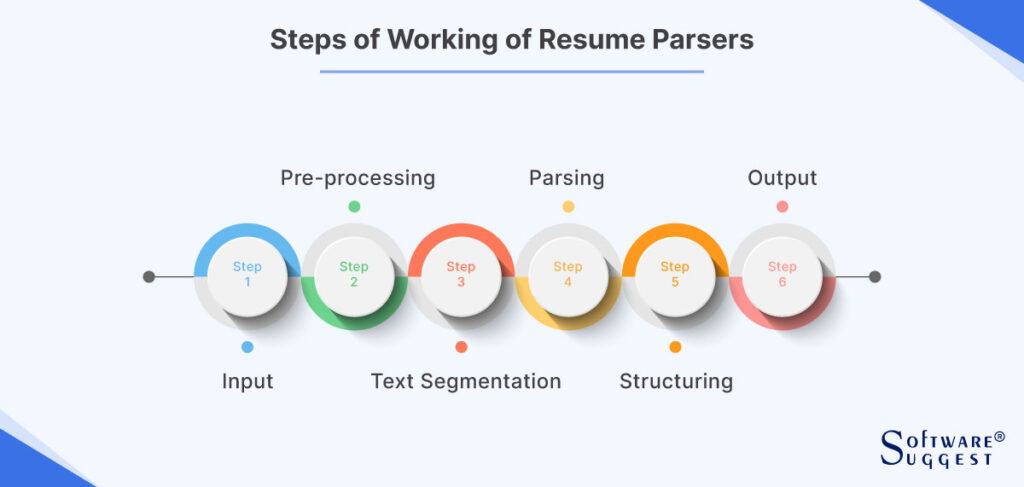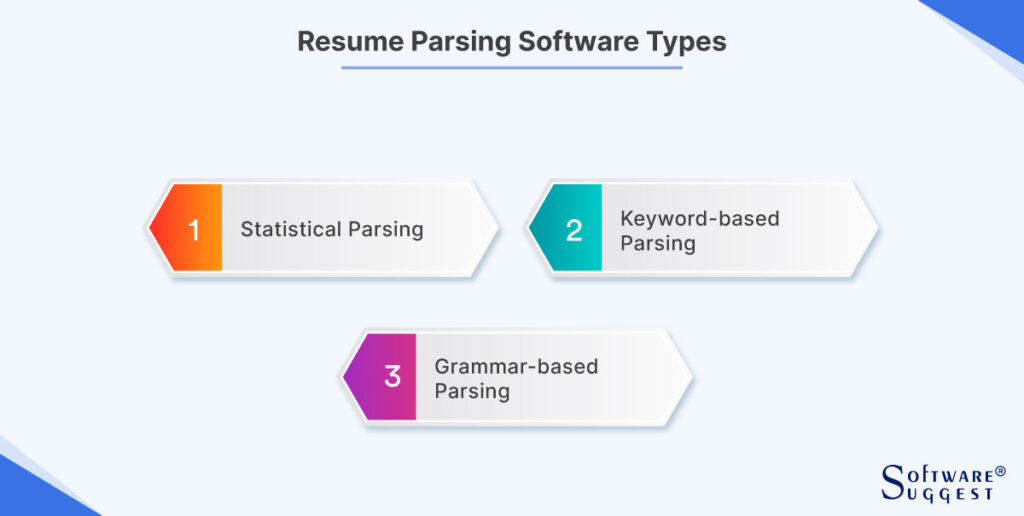When an HR recruiter receives a bunch of resumes from different applicants, going through them manually is really difficult and time-consuming. Automated resume parsing provides a solution by efficiently extracting essential data points such as educational qualifications, work experience, and technical skills from each resume.
You would have to manually extract certain data points from each resume–
- Educational qualifications such as college degrees, GPA, and names of institutions.
- Work experience at different companies along with position held and duration at each.
- Experience with different tools, software, or programming languages
These three would be the basic data points, after which others can be added based on sector, country, and more. The effort would be multiplied purely based on the number of resumes. In certain cases, this might even become a limitation. For example, if you were to go through all resumes manually to hire someone, you may only have the time available to browse the first 100. This would be unfair to those who may have applied later but possess a better profile.
As a solution to such an issue, companies have started using different types of Automated Resume Parsing tools and Software which can extract certain data points, and list them in a chosen format– like CSV. Once this parsing and data point extraction are done in an automated fashion, filtering out candidates becomes a much simpler task. Also, since extracting the data is no more a human task, hiring managers can spend more time in filtering and shortlisting, and pitting the skills of one against another.

Image Source: https://www.softwaresuggest.com/blog/resume-parsing/
Types of Resume Parsing Software
Different software or paid tools can be used for parsing resumes but each of them may handle the data at hand in a different manner. The way in which they handle the data and run algorithms would play a major role in the results of resume parsing. While some methods may produce more accurate results for a specific data format, others may show better results on unknown formats or new types of resumes. Broadly, Resume Parsing Software follow 3 different paths:

Image Source: https://www.softwaresuggest.com/
Keyword Parsing
The most basic resume parsing technique is keyword parsing, where the major keywords are picked from a resume. For example, if you have Python or Java mentioned somewhere in your Resume, they will be picked up, and saved in a “Tech” column, because those keywords are already present in a pre-filled database.
Again, if you have MS-Office or Tableau mentioned, those will be picked and saved under the “Software” or “Tools” column. If you mention names of Schools or Colleges, those will get picked up as well, along with any GPA or percentages that follow. The issue with this type of parsing is that in case you encounter data that does not have any matches with your pre-existing database, it will not get picked up.
For example, if you are experienced in Rust, a relatively new programming language, but it is absent in the existing data, it won’t be picked up during resume parsing. Another issue is when there is a variation of an existing keyword, it may not be properly identified. For example, if someone mentions “Power BI”, instead of “Microsoft Power BI”, it wouldn’t get identified due to a mismatch.
Statistical Parsing
As understandable from the name itself, this is often run on top of keyword resume parsing, to find certain figures related to your resume. It can be data points like your marks in school, graduate or postgraduate degrees. It can also be the years of work experience that you have had in your previous jobs, the average time that you spent at each job, the time gap between jobs, and more.
All these figures are arranged and saved under different column headers, for all the resumes at hand. After that, a certain formula is applied, which can differ for different job positions, and all the candidates are ranked. While this rank isn’t solely responsible for a candidate being shortlisted, it does make the recruiter’s job easier, and also helps them find candidates with the perfect balance.
Intelligent Parsing
Intelligent AI-based resume parsing software helps identify context, along with keywords so as to add intelligence to basic keyword-based resume parsing. It also learns from new resumes and hence is supposed to get better with time. This software can spot keywords along with how they have been used in sentences to identify their importance. Even if they make mistakes, they can be trained by users so as to ensure they “learn” while parsing resumes. Intelligent parsing ensures we do not do a direct keyword match anymore and try to find “similar” traits instead. This improves accuracy by a large degree.
Different Sources that Can be Parsed
While one may imagine resumes to only be of PDF or Microsoft Word (DOCX) formats, they actually come in different shapes and sizes. A resume parsing software or tool needs to be robust enough to handle resumes coming in different formats and through different sources.
Emails
While most resumes are sent as attachments over emails, at times, we even find details of applicants typed in an email itself. This would just result in a text glob that would have to be parsed and important details extracted. In case there are a few lines of introduction, in the beginning, that would need to be set aside since it is of no statistical use.
Docs
These are text files that are usually in Microsoft Word format. Templates can be commonly seen and most resumes follow a standard layout. Training your resume parser with a few hundred of these should ensure that it is able to successfully parse more than 90% of all resumes that are sent.
PDFs
These fall under 2 categories. Most of those which are converted from DOCX formats can be easy to read since they can be reconverted to a text file first. However, scanned PDFs may be impossible to parse since they would require OCR software to extract the text even before the data can be parsed. Such cases are negligible and can be taken as a limitation of Automated Resume Parsing software.
Information from Google Forms
These are usually applicant data shared over social media websites like Facebook or Instagram. Links are shared by the HR department or hiring agencies, and applicants fill up their information under different headers. Since the information comes in a format set by the person who creates the form, it is much easier to consume and the data collected can be parsed to produce very accurate results.
Automation in Recruitment
The growing amount of automation, and AI-based tools that are creeping into recruitment will help it grow as an industry. The fear of replacement is unfounded since these tools do not replace HR recruiters. Instead, they help remove the mundane parts and leave the major decision and problem solving to the human counterpart. The use of these tools, along with Automated Resume Parsing Software is only expected to grow in the upcoming years as companies scramble to filter out applicants to fit different open positions across multiple departments and fill up positions left vacant due to high attrition rates.



